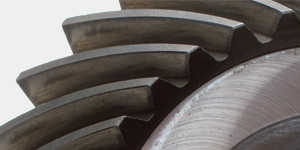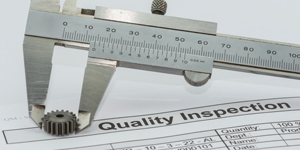Common Gear Failures
The strength, toughness, and cost effectiveness of steel make it the most widely used material in gear-making . Different steel compositions offer an array...
Industry Standards For Steel Cleanness
The correlation of steel cleanness to the performance of parts made from steel has been recognized by engineers for many years. This has been...
Steel Cleanness and Why Measurement Matters
In the past, cyclically loaded gearbox components often experienced fatigue failure caused by large oxide inclusions. Gradual improvements to the steelmaking process led to...
Additive Manufacturing: Challenges, Possibilities, and the Gear Industry
Additive Manufacturing (AM) is a technology that has the potential to fundamentally alter manufacturing, specifically metal manufacturing. The ability to design complex shapes, which...
Nitriding’s “White Layer” and Isotropic Superfinishing
Developed in the early 20th century, nitriding has evolved into a standard process across many industrial applications. Often considered the simplest technique for case...
Gear Corrosion in the Manufacturing Process
No matter how well gears are designed and manufactured, gear corrosion can occur during the manufacturing process, which may, in turn, result in catastrophic...
Comparing Surface Roughness Parameters
Effective gear design must account for a range of potential failure modes. As discussed in previous Materials Matter columns, gear failure modes can be...
Lambda Ratio
The lambda ratio was originally developed to quantify the quality of lubricant operating regimes relative to bearing performance . Starting around the 1990s, the...
Scuffing
Gear meshing is one of the most complex areas of study in tribology. Meshing consists of both sliding and rolling motion and can be...
Micropitting
Micropitting is a gear failure mode that typically occurs when higher contact stresses are applied to hardened gear teeth. Unlike most other failure modes,...
The Elimination of Part Break-In by Isotropic Superfinishing
Precision metallic components undergo a number of manufacturing processes that can include milling, grinding, and honing as a part of final surface preparation. A...
Automotive Fuel Efficiency Standards and the Impact from Gears
In 2010, President Obama established a course of direction for the EPA (Environmental Protection Agency) and NHTSA (National Highway Traffic Safety Administration) to set...
Wind Turbine Gear Repair
Wind turbine gearbox durability has improved significantly over the past ten years. The days of early gearbox failure due to epidemic micropitting are largely...
Power Density and Isotropic Superfinishing
Power density, also described as load-carrying capacity, is simply the amount of load that can be safely transferred by a gear or other power...
Optimizing Performance with Surface Finish and Lubrication
Materials and manufacturing processes have evolved to generate lighter, stronger, and more robust components to meet the demand for more efficient, highly loaded mechanical...
The Gear Drawing Roughness Specification
In the January Materials Matter column, “Roughness Measurement of Precision Gear Teeth,” the importance of accurate and repeatable roughness measurement of precision gear teeth...
Roughness Measurement of Precision Gear Teeth
Over the past 25 years, industries such as power generation, aerospace, automotive, and others have continuously increased the operational demands of gearboxes. The precision...
Gear Surfaces and Operational Performance
In the search for increased performance and durability, gear and bearing design has sought to make use of improved steel grades combined with enhanced...
Isotropic Superfinishing
Increasingly stringent operational requirements from customers coupled with enhanced global technical standards have heightened the focus of gear designers on a wide array of...
History of Bending Fatigue, Part VI
In the sixth and final part on the impending factors of fatigue design, we illustrate the process of Weibull failure analysis. In engineering, we...




























